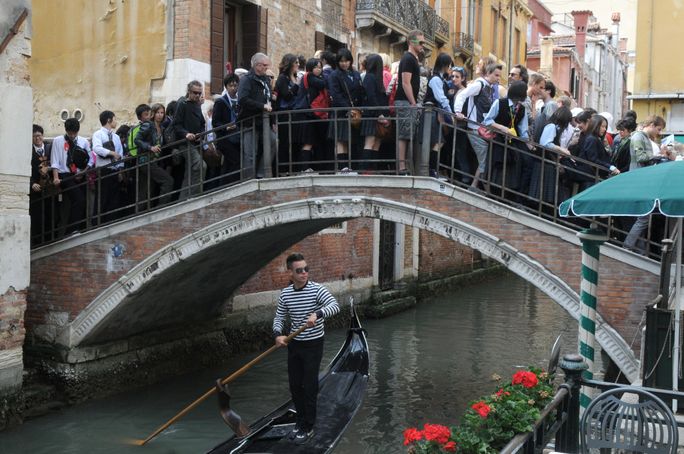Italy’s celebrated Floating City has hit an unwelcome watershed in its long-standing struggle with overtourism.
For the first time ever, the number of beds designated for tourist use on Venice’s main island has exceeded the city’s actual year-round residents. According to The Guardian, there are now 49,693 beds available in tourist accommodations, including traditional hotels and private vacation rental properties, compared with its permanent populace of 49,304 inhabitants.
This turning point arrives as United Nations Educational, Scientific and Cultural Organization (UNESCO) officials come together to consider whether the City of Canals and its lagoon should be added to the organization’s list of ‘World Heritage in Danger’ sites. The question will be put to the UN cultural agency’s World Heritage Committee during a meeting that just commenced in Riyadh, Saudi Arabia on Sunday and runs through September 23.
In July, UNESCO issued a recommendation that Venice be added to the at-risk list, citing “irreversible” damage that the storied city is suffering due, among other things, to the effects of climate change and mass tourism. There have reportedly been previous efforts to add the sinking city to UNESCO’s blacklist. Upon issuing the latest recommendation, UNESCO experts said that Italy is failing to protect Venice’s historic sites, calling the country’s measures “insufficient and not detailed enough”.
Since the “Golden Age of Travel” commenced in the 1950s, Venice’s main island has lost more than 120,000 residents who were driven away largely by the unrelenting flood of tourists, as thousands of visitors pack the city’s historic squares, canal bridges and narrow walkways each day.
According to local activist group Venessia.com, which has been tracking population levels in the historic city center, the number of Venetian residents first fell below 50,000 last summer.
“We feel like foreigners in our own home, because when you walk along the streets we are in the minority,” said Matteo Secchi, leader of Venessia.com. “Every now and then you see a fellow Venetian and you salute them from afar, but other than that you are surrounded by tourists.”

Tourists on a crowded bridge in Venice, Italy. (photo via Bumblee_Dee / iStock Editorial / Getty Images Plus)
Ocio, a residents’ organization focused on housing issues, told The Guardian, “Although the [number of tourist beds] had already overtaken [residents] in some districts, ahead of the [UNESCO] meeting we wanted to highlight how the constant opening of hotels and the lack of regulation of short-term rentals have progressively transformed the historic city into a tourist spot.”
“We don’t need UNESCO to tell us we’re at risk,” Secchi told the outlet. “We’ve known for decades. But maybe being put on the danger list will sprinkle a bit of pepper on to the authorities to do more.”
Although Venice enjoyed a temporary reprieve from the foreign masses amid the pandemic, visitors came rushing back with a vengeance this summer, as they did across much of Europe. On peak days, the city saw and average of 40,000 day-trippers, which induced local authorities to put a previously postponed plane to charge an entrance fee into effect as of 2024. The €5 (just over $5) fee will only apply to single-day visitors who aren’t staying overnight in the city.
Secchi and others like him worry that, rather than having the intended effect of lessening day-trippers’ impact, the measure will turn his home into a theme park, rather encouraging people to live and work there. “Venice needs to regulate the tourist flow, not charge an entrance fee,” he said.
For the latest travel news, updates and deals, be sure to subscribe to the daily TravelPulse newsletter here.
Topics From This Article to Explore